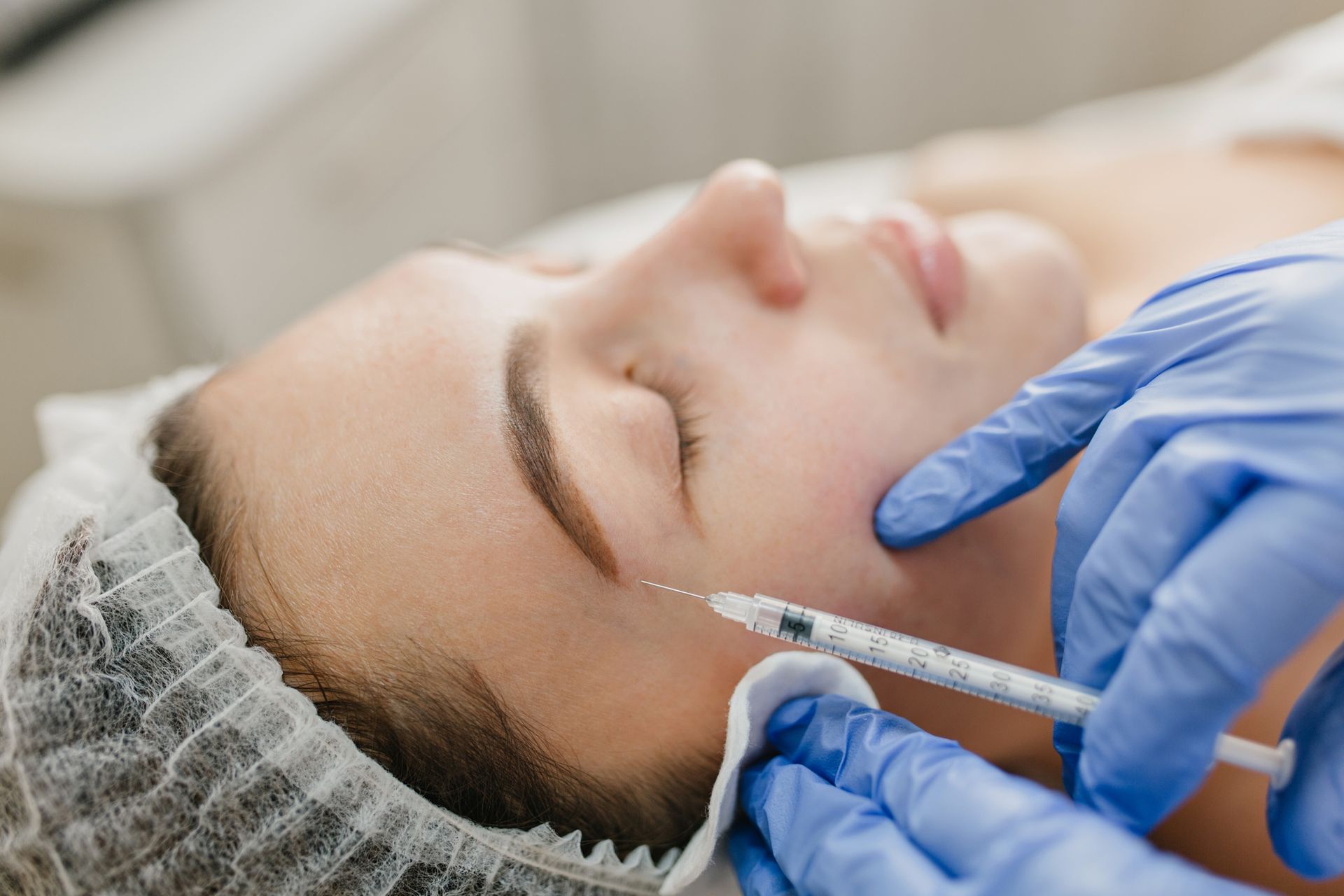Stem Cell Therapy Options: Regenerative Medicine's Future
Key Takeaways
-
Stem cell therapy is a cutting-edge treatment in regenerative medicine
-
Various types of stem cells are used, including embryonic, adult, and induced pluripotent stem cells
-
Potential applications range from treating neurological disorders to heart disease
-
Clinical trials are ongoing to determine effectiveness and safety
-
Ethical considerations surround the use of embryonic stem cells
-
Regulatory landscape is evolving as research progresses
Stem cell therapy is an innovative approach in regenerative medicine that offers potential treatments for a wide range of diseases and injuries. This article will examine the various options available in stem cell therapy, their applications, and the current state of research and clinical trials.

Understanding Stem Cells and Their Potential
Stem cells are unique cells in the body that have the ability to develop into different cell types. They serve as a repair system for the body, replenishing other cells as long as a person is alive. Stem cells are distinguished by two important characteristics:
-
They can renew themselves through cell division, even after long periods of inactivity
-
They can be induced to become tissue- or organ-specific cells with special functions
These properties make stem cells a valuable resource for medical treatments. The potential of stem cells to regenerate damaged tissues and organs has led to extensive research and development of stem cell therapies.
Types of Stem Cells Used in Therapy
Embryonic Stem Cells
Embryonic stem cells are derived from embryos that are 3-5 days old. These cells are pluripotent, meaning they can give rise to virtually any type of cell in the body. While embryonic stem cells offer great potential for treating a wide range of diseases, their use is controversial due to ethical concerns.
Adult Stem Cells
Adult stem cells are found in small numbers in most adult tissues, such as bone marrow or fat. They are also found in umbilical cord blood. Adult stem cells are more limited in their ability to differentiate into different cell types compared to embryonic stem cells. However, they still offer significant therapeutic potential and are less controversial.
Induced Pluripotent Stem Cells (iPSCs)
iPSCs are adult cells that have been genetically reprogrammed to an embryonic stem cell-like state. This technology allows researchers to create pluripotent stem cells without the use of embryos, potentially sidestepping some of the ethical issues associated with embryonic stem cells.
Current Applications of Stem Cell Therapy
Stem cell therapy is being studied for a wide range of conditions. Some of the most promising areas of research include:
Neurological Disorders
Stem cells show potential in treating neurological conditions such as Parkinson's disease, Alzheimer's disease, and spinal cord injuries. Research is ongoing to determine how stem cells can be used to regenerate damaged neural tissues and restore function.
Cardiovascular Disease
Studies are exploring the use of stem cells to repair damaged heart tissue following a heart attack. Stem cells may be able to generate new heart muscle cells and blood vessels, improving heart function.
Diabetes
Researchers are investigating the use of stem cells to create insulin-producing cells for people with type 1 diabetes. This could potentially eliminate the need for daily insulin injections.
Orthopedic Conditions
Stem cell therapy is being studied for the treatment of joint disorders such as osteoarthritis. The goal is to use stem cells to regenerate cartilage and reduce inflammation in affected joints.
The Process of Stem Cell Therapy
The process of stem cell therapy typically involves several steps:
-
Stem cell collection: Stem cells are harvested from the patient's own body (autologous) or from a donor (allogeneic)
-
Cell processing: The collected cells are processed and may be expanded in a laboratory
-
Cell injection: The prepared stem cells are injected into the patient's body, either directly into the affected area or intravenously
-
Follow-up: Patients are monitored to assess the effectiveness of the treatment and any potential side effects
Clinical Trials and Research
Numerous clinical trials are currently underway to evaluate the safety and effectiveness of stem cell therapies for various conditions. These trials are essential for moving stem cell treatments from the laboratory to clinical practice.
It's important to note that while many stem cell therapies show promise in early studies, more research is needed to fully understand their long-term effects and optimal use.
Regulatory Landscape and Ethical Considerations
The regulation of stem cell therapies varies by country. In the United States, the Food and Drug Administration (FDA) oversees the development and approval of stem cell treatments. The FDA has approved only a limited number of stem cell products for specific uses, such as hematopoietic stem cell transplantation for certain blood and immune system disorders.
Ethical considerations surrounding stem cell therapy primarily focus on the use of embryonic stem cells. The debate centers on the moral status of human embryos and whether it is ethical to use them for research purposes. This has led to varying policies and regulations across different countries and regions.
Challenges and Future Directions
While stem cell therapy holds great promise, several challenges need to be addressed:
-
Ensuring the long-term safety of stem cell treatments
-
Improving the efficiency of stem cell differentiation and integration
-
Overcoming immune rejection in allogeneic transplants
-
Scaling up stem cell production for widespread clinical use
-
Addressing ethical and regulatory issues
Future directions in stem cell research include:
-
Developing more efficient methods for generating and differentiating stem cells
-
Exploring combination therapies that use stem cells alongside other treatments
-
Advancing personalized medicine approaches using patient-specific stem cells
-
Investigating the use of stem cells for drug discovery and toxicity testing
Stem Cell Tourism and Patient Safety
As interest in stem cell therapy grows, some patients seek unproven treatments outside of regulated clinical trials. This phenomenon, known as "stem cell tourism," can pose significant risks to patient safety. It's crucial for patients to be aware of these risks and to only pursue stem cell treatments that are part of approved clinical trials or have been proven safe and effective.
Patients considering stem cell therapy should always consult with qualified healthcare professionals and seek treatments only from reputable, accredited facilities.
The Role of Stem Cell Banks
Stem cell banks play an important role in the future of regenerative medicine. These facilities store stem cells for potential future use. There are two main types of stem cell banks:
-
Public banks: Store donated stem cells for anyone who needs them
-
Private banks: Store an individual's stem cells for their own potential future use
Stem cell banking raises both opportunities and ethical questions. While it provides a valuable resource for research and potential treatments, issues such as equitable access and long-term storage viability need to be addressed.
Stem Cell Therapy in Columbus, Georgia
In Columbus, Georgia, interest in stem cell therapy is growing. While the city may not be a major hub for stem cell research, residents have access to information and potential clinical trials through nearby medical centers and universities. Patients in Columbus should be aware of the current state of stem cell research and the importance of participating in properly regulated studies or treatments.
Local healthcare providers in Columbus can offer guidance on the latest developments in stem cell therapy and help patients understand their options. As research progresses, it's likely that more stem cell therapy options will become available to residents of Columbus and the surrounding areas.
Conclusion
Stem cell therapy represents a promising frontier in regenerative medicine. While many challenges remain, ongoing research and clinical trials are paving the way for new treatments that could revolutionize healthcare. As the field advances, it's crucial for patients, healthcare providers, and policymakers to stay informed about the latest developments, potential benefits, and risks associated with stem cell therapies. With continued research and careful regulation, stem cell therapy may offer hope for many previously untreatable conditions.
Share This Blog











